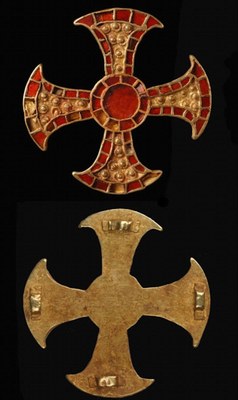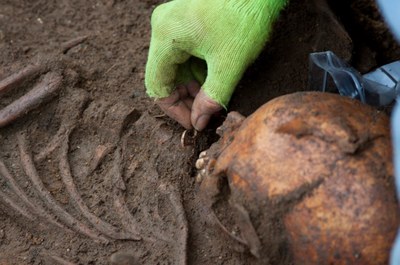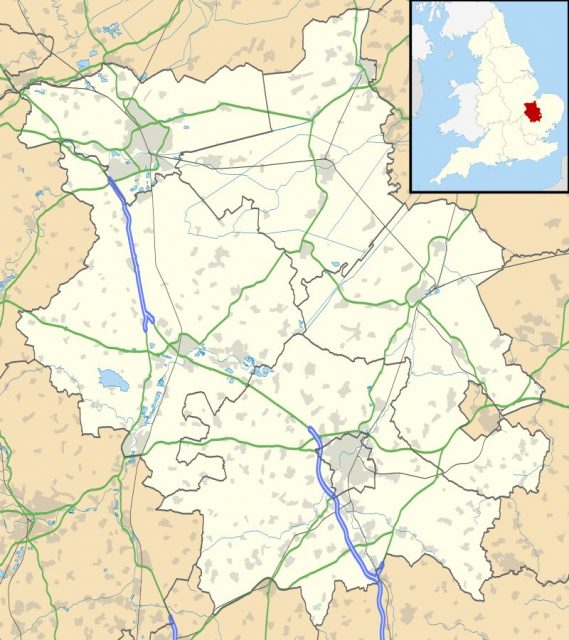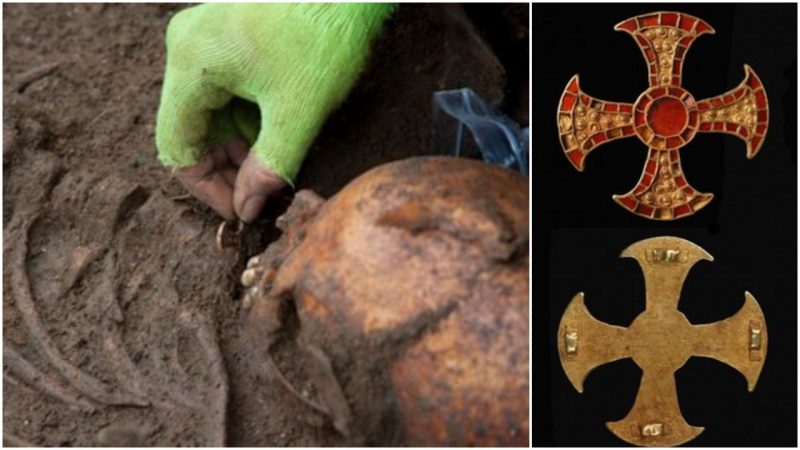In 2011, archaeologists came across a rare find in the vicinity of Trumpington, a village on the periphery of Cambridge. A site that was being prepared for a housing development turned out to be a previously unknown Anglo-Saxon settlement. Several graves were unearthed, included one where a young girl had been buried some 13 centuries ago, and whose bones were found with an alluring cross made of gold and garnet.
Archaeologists have described the cross as a rare find, and in February 2018, the artifact was made a gift to the Museum of Archaeology and Anthropology in Cambridge (MAA), which is located not very far from the place where the graveyard emerged several years ago.
The girl was laid to rest on a bed likely her own, archaeologists say. Over the course of so many centuries, nearly all components of the bed had rotted except for its iron parts. In addition to the cross, the graveyard, which would have been part of what is now regarded as one of the earliest-known Christian sites on English soil, included several other items: gold pins, glass beads, a chain (that would have hung from the girl’s belt), as well as a knife made of iron. There may have been more items that have likely decomposed over the centuries.
Nevertheless, it was the pectoral cross, still shining, that has excited everyone. Estimates tell it is worth more than $110,000, which is a clear sign the buried girl was born to Anglo-Saxon aristocratic parents. Such quality-made jewels as well as the bed burial both count as “exceptionally rare finds,” reports the Guardian.

University of Cambridge.
Forensic analysis of the human remains from the Trumpington graveyard suggest that they belong to a girl whose age was in between 14 and 18 years at the time of death. Her remains would have been buried not earlier than 650 A.D. and not later than 680 A.D. Although the cross is a signal that she, and her family, were early followers of Christianity, the way she has been laid to rest, with all the goods provided in the burial pit, also hint at prevalent pagan customs. It is unknown what caused the death of the teenager, and given her deathbed was found close to few other graves, perhaps this was a family graveyard.
Reportedly, other bed burials have been identified in the past, but only one, unearthed in the 19th century, also contained a cross in it. It is considered that all these bed burials are of women. According to the Guardian, the 19th-century is one found at Ixworth in Suffolk, but information about it is scarce. More significant will be the future efforts of Cambridge University archaeologists to collect as many details as possible related to the Trumpington find, and to deliver meaningful conclusions about Anglo-Saxon bed and cross burials.

University of Cambridge.
The Cambridge museum senior curator, Jody Joy, stated that at the museum they are grateful for receiving the rare find from Trumpington. It will certainly add more value to the MAA, which has “one of the best collections of Anglo-Saxon artifacts in the British Isles.” He has also described the artifact as beautiful and mysterious.
In future research efforts, the Anglo-Saxon cross is certain to provide more details to the museum and their efforts to reconstruct the story of how Christianity was introduced in the region, as well as more details about the “very early years of the English church after St Augustine was dispatched to England by the Pope in 597 A.D. to convert the pagan Anglo-Saxon kings.”
All discovered artifacts from the girl’s grave, including the cross, are to be exhibited at the Cambridge Museum. Joy further commented that the findings “are of international quality and significance–but with the strongest connections to Cambridge and the surrounding settlements.”
The 7th century must have been a transition period, when more and more people started to accept the new religion that was preached, such as was the case with the aristocratic Anglo-Saxon teenager. Reportedly, only five more pectoral crosses, examples of fine Anglo-Saxon craftsmanship, have been so far retrieved in archaeological missions. Only members of the elite would have had enough fortune to own one.

Supposedly some elements of these elaborate jewels have been identified to originate from faraway countries such as Turkey, which might indicate the existence also of interesting, previously unknown, trade routes at the time. Such postulations possibly reveal new details about the s0-called Dark Ages, which we know very little about. The jewel from the Trumpington grave is certainly one unique, splendid example of craftsmanship that was present in those times.
Related story from us: Evidence of a 14,000-year-old settlement found in western Canada
Regarding the Trumpington grave site, it might have been a rich settlement where people were devoted to the new religion, but this is a speculation only. If there were a larger monastic settlement, its remnants might possibly hide in some of the surrounding lots. But there are no known records of an earlier church existing in the area, except for the 12th-century village church that sits close to the location of the 2011 findings.
